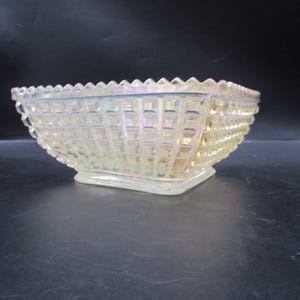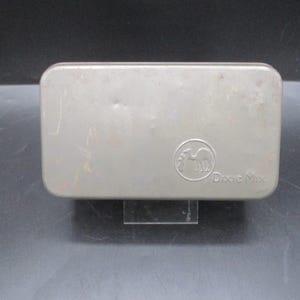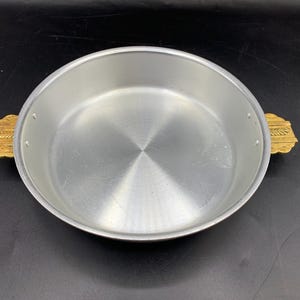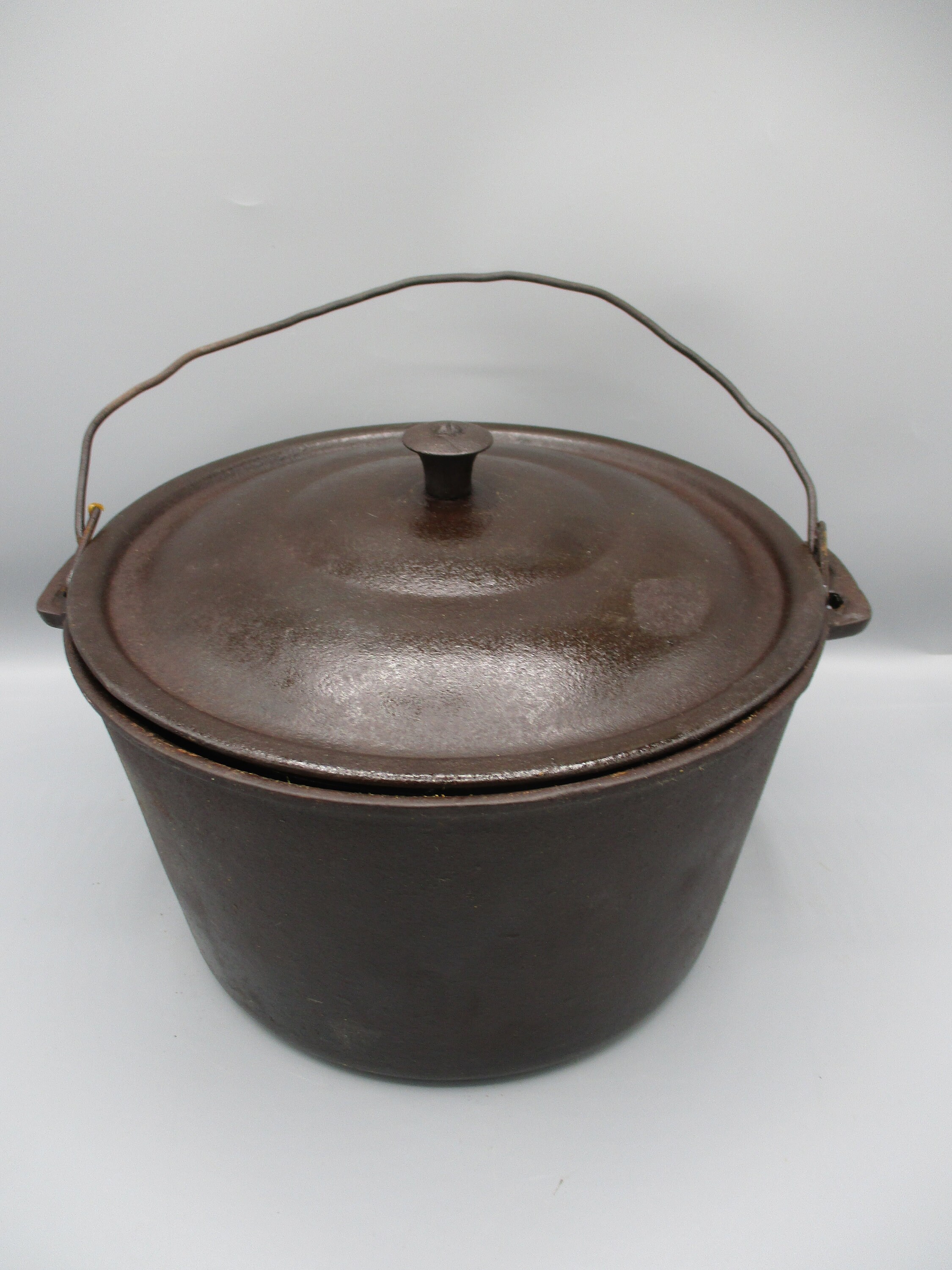



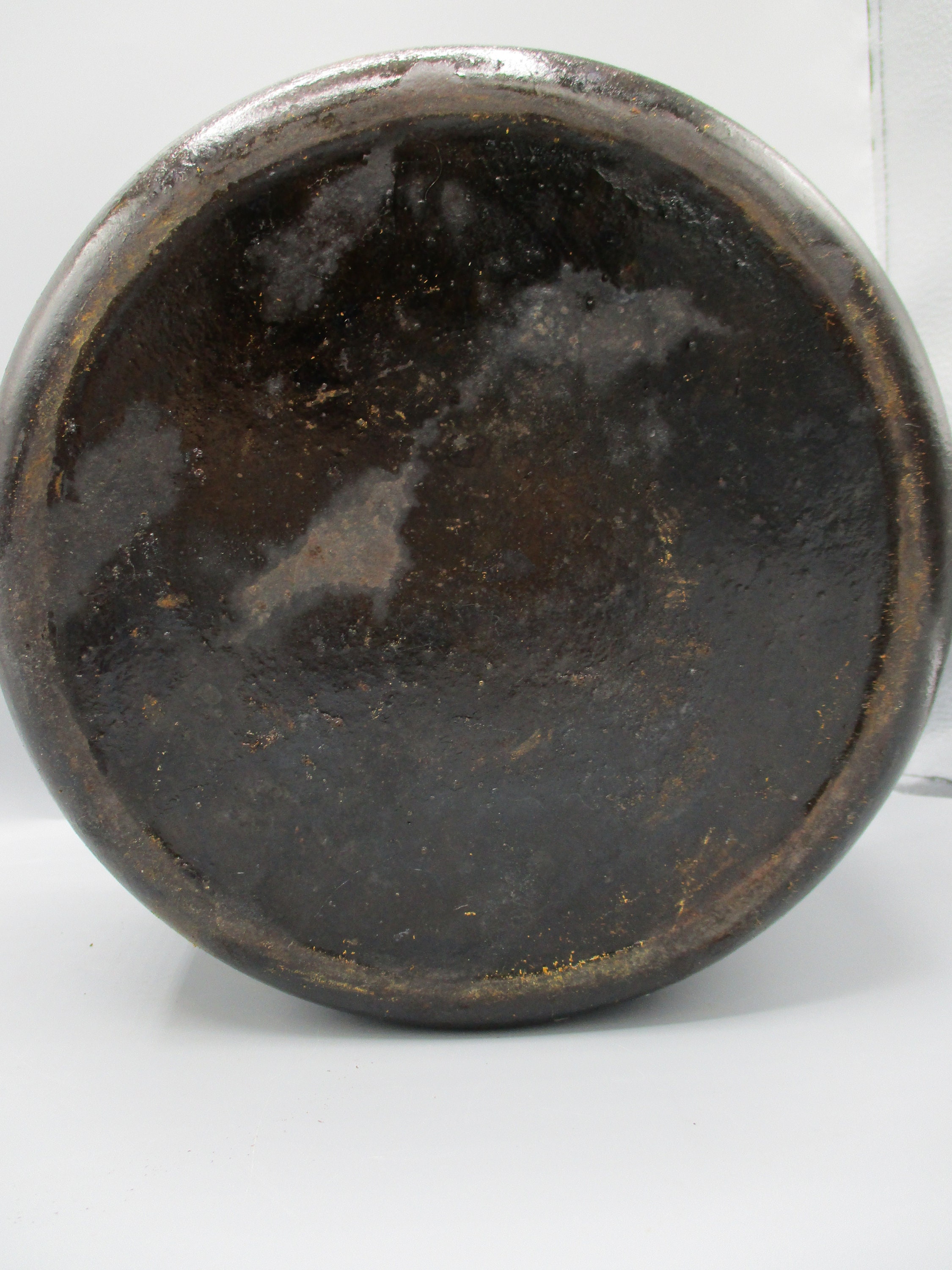

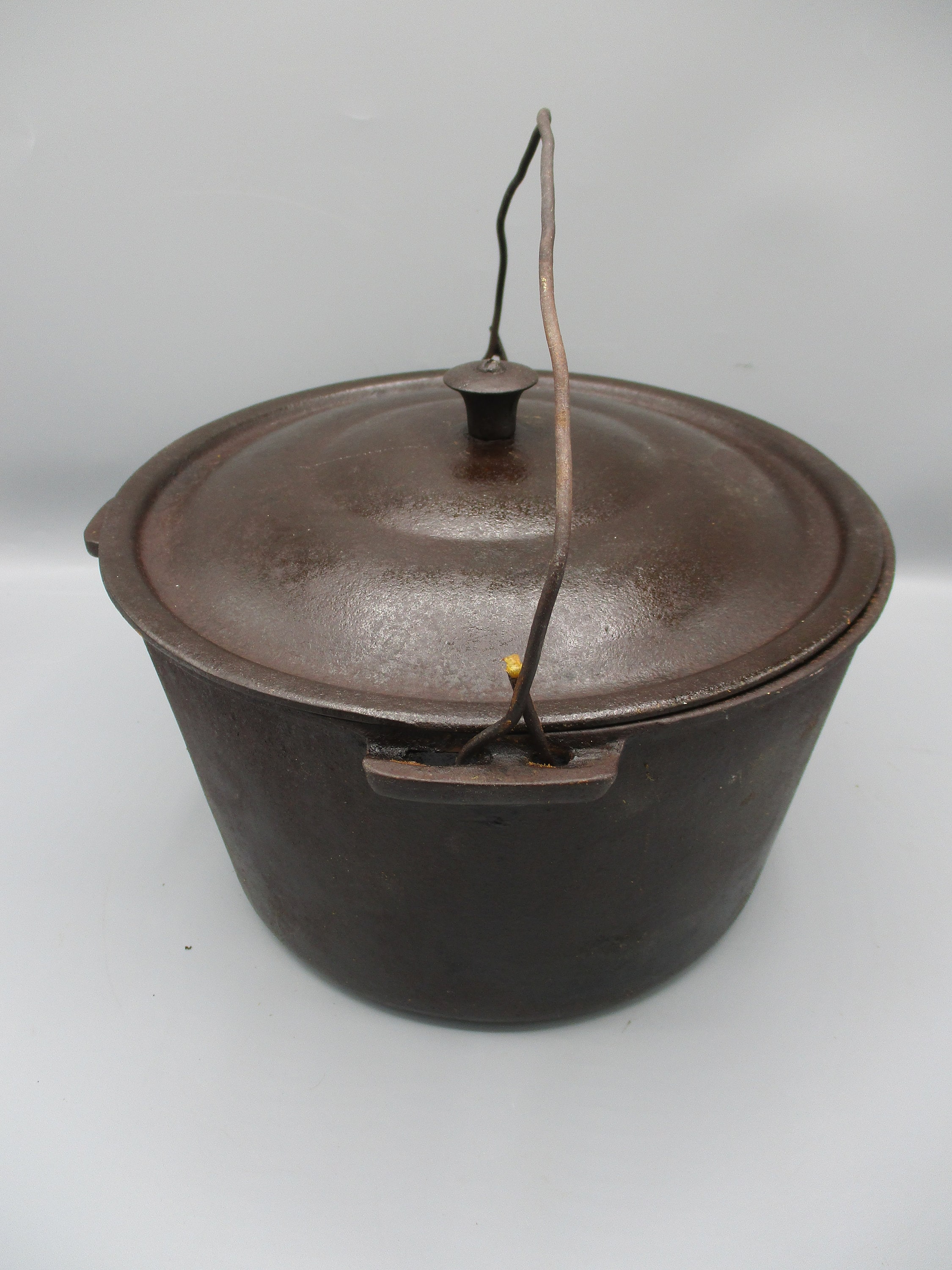

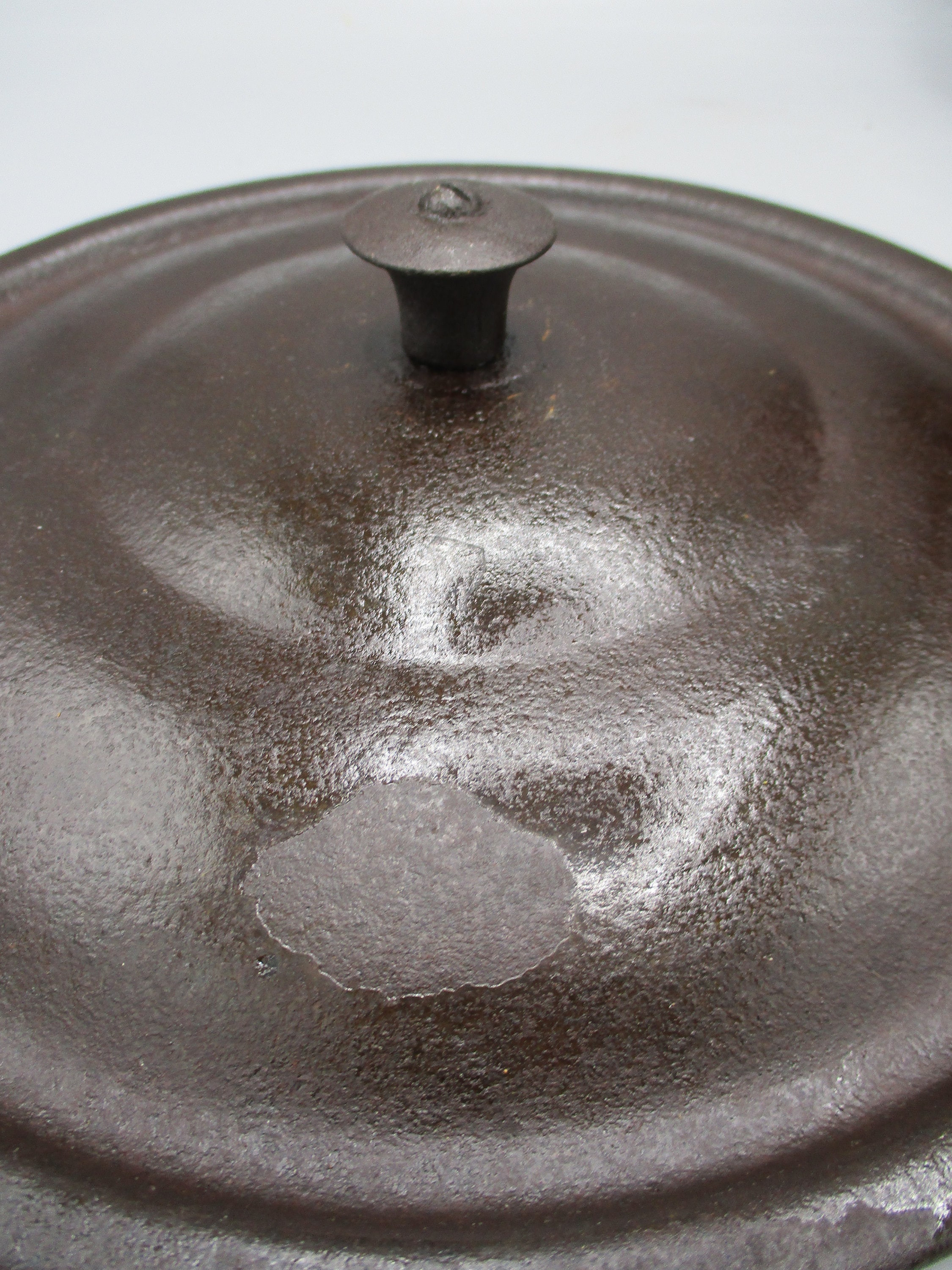

American History Made
1930's Wardway Cast Iron Dutch Oven W/Lid-Ohio, USA
$100.00
-
DetailsThe name "Wardway" is the store brand name given by the Chicago-based Montgomery Ward's ready-cut homes (like Sears) from 1922 to 1931. The official name of the ready-cut brand was called Wardway Homes. When Montgomery Ward stopped offering Wardway homes in their catalog, the company carried over the Wardway trademarked name, for a collaboration with Ohio-based Wagner Manufacturing (iron foundry & forgery) to make various cast iron and aluminum goods. The Wagner made Wardway ovenware was available in the department stores mail-order catalog between 1932-1941. Mail-order catalogs were the e-commerce sites of the late 19th century and throughout the 20th century.
Around the end of the twentieth century, the country witnessed the fall of two mail order shopping giants: Montgomery Ward and Sears. They left quite an impact on the city of Chicago and the rest of the shopping landscape in America. You can say that both Sears and Montgomery Ward paved the way for e-commerce to blossom. Unfortunately, both Montgomery Ward and Sears failed to keep up with the market trends of the 1990’s with the rise of big box retail giants like Wal-Mart and Target.
E-commerce is currently dominating the modern shopping market, with Amazon and Wal-Mart as the most notable retail giants. The dominance that e-commerce has on shopping habits for most consumers around in the country, has caused a sharp decline of in-person foot traffic of brick-and-mortar retail stores – but the social impact of e-commerce on society as a whole, is a story for another time. To an extent, some retail giants fell during the rise of online e-commerce, like Toys R Us and RadioShack to name a few who declared bankruptcies.
Montgomery Ward was founded by Aaron Montgomery Ward and started his business in Chicago; there are some conflicting reports that his first office was in a single room at 825 North Clark Street or in a loft above a stable on Kinzie Street, between Rush and State Streets. In 1883, the company grew its catalog from 240 pages and included about 10,000 items. In 1896, Ward faced its first serious competition in the mail order business, when Sears was founded, and they created their first general catalog. In the early 1900s, Ward had total sales of about $8.7 million, compared to the $10 million Sears had gained, both companies wrestled for dominance during the 20th century.
In 1926, the company formed its first retail outlet store in Plymouth, Indiana, foregoing with the mail-order-only tradition. It continued to operate its catalog business, while actively being aggressive on expansion and building retail outlets in the late 1920s. In 1928, after opening its first outlet store, they had opened 244 stores and by 1929, they had more than doubled its number of outlets stores to about 531. The flagship retail store in Chicago was located on Michigan Ave between Madison and Washington streets. In 1930, Montgomery Wards declined a merger offer from Sears.
Montgomery Wards was successful in its retail business. Green awning stores were spotted in hundreds of small towns across the country. The larger stores were built in major cities. Towards the end of the 1930s, Montgomery Ward had become the country’s largest retailer.
By the 1990s, Montgomery Ward, and to an extent Sears, began to lose market ground to low-price competitors from the rise of retail giants such as Target and Walmart, which eroded the traditional customer base that Montgomery Ward depended on. In 1997, Montgomery Ward filed for Chapter 11 bankruptcy. As a last hail-Mary effort to remain competitive, Montgomery Ward closed over 100 retail locations in 30 states, ditched the specialty stores, rebranded the chain name as simply “Wards.” They spent millions of dollars to renovate the remaining outlets to become flashier and more consumer friendly. On December 28, 2000, after lower-than-expected sales during the Holiday season, the company announced it would cease operations and closed its remaining 250 retail stores and laid off its 37,000 employees.
The story of Montgomery Ward is quite a fascinating story and a demonstration to the ever-evolving nature of commence. From a humble beginnings story of a mail-order company and into a powerhouse of brick-and-mortar market dominance, Montgomery Ward left an unquestionable mark on the American shopping experience. Nevertheless, their inability to adapt to market trends and with the rise of powerhouse companies, like Walmart ultimately led to its downfall.
This item was made to LAST A LIFETIME from the infamous cast iron-cookware pioneers, the Wagner Manufacturing Co. It was made in Wagner's legendary foundry-factory in Sidney, Ohio (1891-1999).
Weighs 11 lbs. 8 oz
Measures 10" Across 5.25" Tall
Some minor rust and discoloration in spots but overall excellent shape and seasoned...SITS FLAT
ETSY INTELLECTUAL PROPERTY POLICY
As a venue for artists, designers, and makers, Etsy takes intellectual property rights very seriously. We comply with intellectual property laws and industry best practices in order to maintain the integrity of our creative marketplace. This Intellectual Property Policy explains how we address allegations of infringement, how authorized parties can submit reports of infringement regarding content on our marketplace, and how Etsy sellers can respond when their listings or shops are affected by a report.
ANY COPY AND PASTING OR PLAGIARIZING OF MATERIAL
ON MEMORYLANEVINTIQUES IS SUBJECT TO ETSY INVESTIGATION AND PENALTIES!
MemoryLaneVintiques research also protect our shop from Intellectual Property Theft by researching for violators of our material. Be respectful!
Chad & Jennifer Johnston (August 2024)

